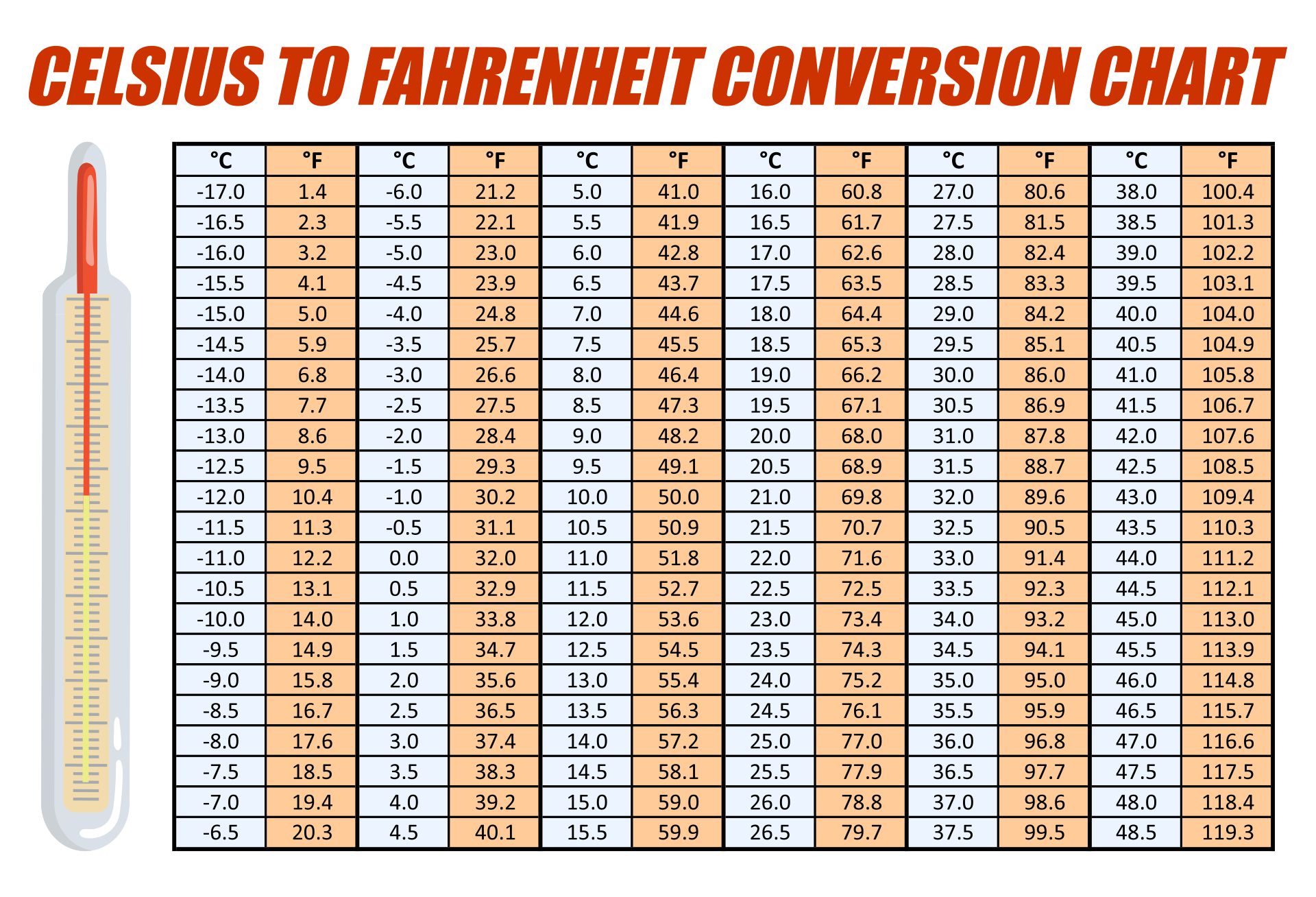Have you ever found yourself in a foreign country, gazing at a thermometer and wondering why the numbers seem so different from what you’re used to? Or maybe you’re following a recipe that calls for a specific temperature in Fahrenheit, but your oven only reads Celsius. The seemingly simple act of converting between Fahrenheit and Celsius can become a frustrating puzzle if you don’t understand the basics. This article will demystify the conversion between Fahrenheit and Celsius, explaining its history, the formula used, and why it matters in our everyday lives.

Image: erlegr.click
Understanding the relationship between Fahrenheit and Celsius is essential not only for navigating different temperature scales but also for comprehending scientific experiments, weather reports, and even cooking. Both scales measure heat, but they do it differently. The Fahrenheit scale, named after the German physicist Gabriel Fahrenheit, is the standard temperature scale in the United States. Celsius, named after the Swedish astronomer Anders Celsius, is the preferred temperature scale in most of the world. The difference lies in the freezing and boiling points of water: water freezes at 32 degrees Fahrenheit and boils at 212 degrees Fahrenheit, while it freezes at 0 degrees Celsius and boils at 100 degrees Celsius.
Unveiling the Secret Formula
The conversion between Fahrenheit and Celsius is a straightforward process that can be expressed through a simple, yet powerful equation. To convert Fahrenheit to Celsius, we use the following formula:
°C = (°F – 32) x 5/9
Let’s break down the formula step by step:
- Subtract 32 from the Fahrenheit temperature: This accounts for the difference in freezing point between the two scales.
- Multiply the result by 5/9: This is the conversion factor that adjusts for the difference in the size of each degree on the two scales.
For example, let’s convert 44 degrees Fahrenheit to Celsius:
- Step 1: 44°F – 32 = 12
- Step 2: 12 x 5/9 = 6.67°C
Therefore, 44 degrees Fahrenheit is equivalent to 6.67 degrees Celsius.
Beyond the Numbers: The Importance of Conversion
The conversion between Fahrenheit and Celsius is not just a mathematical exercise; it’s a fundamental aspect of communication and understanding in a globalized world. Here are some key areas where this conversion plays a vital role:
-
Weather Forecasting: Imagine trying to understand a weather report that uses a scale you’re unfamiliar with! Understanding conversions lets you easily grasp weather information regardless of the scale used. You’ll know whether you should pack a jacket or sunscreen, based on the temperature forecast in Celsius or Fahrenheit.
-
International Travel: From reading menus in restaurants to understanding local weather conditions, the ability to convert between Fahrenheit and Celsius makes travel smoother and more enjoyable. It helps you avoid uncomfortable situations, such as ordering a scorching hot beverage when you were expecting a refreshing drink.
-
Science and Research: Scientists and researchers rely on accurate temperature measurements in their experiments, and the ability to convert between Fahrenheit and Celsius is crucial for analyzing results and achieving consistency across different studies.
-
Cooking and Baking: Precise temperatures are essential when cooking and baking, and understanding the conversion allows you to follow recipes accurately, whether they’re written in Fahrenheit or Celsius. Imagine the disappointment of a ruined cake due to an incorrect temperature setting!
-
Medical Care: Doctors and nurses rely on accurate temperature measurements to monitor the health of their patients. The ability to convert between Fahrenheit and Celsius is critical for ensuring consistent care and avoiding misinterpretations.
Mastering the Conversion: Tips and Tricks
While the formula for converting Fahrenheit to Celsius is straightforward, there are some handy tips and tricks that can make the process even easier:
-
Memorize some key reference points: Remembering that 0°C is the same as 32°F and that 100°C is the same as 212°F can be a helpful starting point.
-
Use online calculators: Many online calculators readily convert Fahrenheit to Celsius and vice versa.
-
Learn the “rule of thumb” for rough conversions: A good rule of thumb is to subtract 30 from the Fahrenheit temperature and then divide by 2 to get an approximate Celsius temperature. While not perfectly accurate, this method can give you a quick estimation.
-
Practice makes perfect: The more you practice converting between Fahrenheit and Celsius, the more comfortable you’ll become with the process. Try converting temperatures you encounter in everyday life, such as the room temperature or the temperature of a beverage you’re drinking.

Image: bapalfa.weebly.com
44 Fahrenheit To Celsius
From Confusion to Clarity: Embracing the Conversion
Understanding the conversion between Fahrenheit and Celsius can seem like a small step, but it’s a significant step toward a deeper understanding of the world around us. From navigating international travel to ensuring accurate scientific measurements, this fundamental conversion allows us to connect with different cultures and perspectives, while also enhancing our ability to understand and interact with the world in a more informed and confident manner.
So the next time you encounter a temperature reading in a different scale, remember the power of conversion. Embrace the knowledge, and you’ll be well on your way to navigating the world with ease and understanding.






